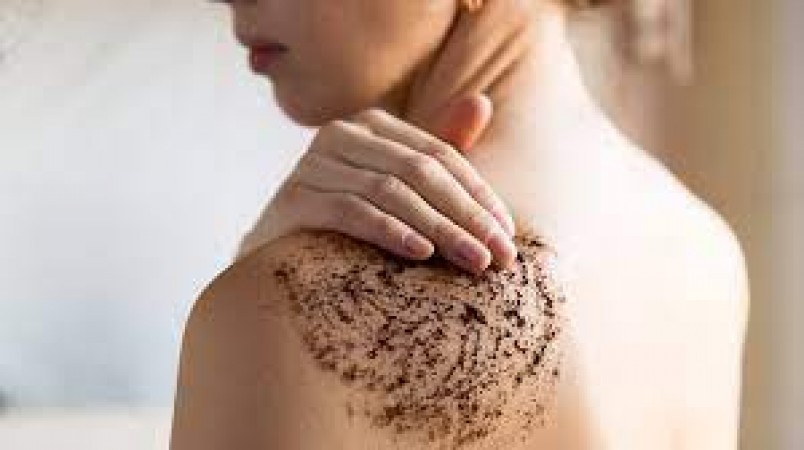
In the pursuit of flawless, radiant skin, many individuals are turning to body exfoliation as the not-so-secret secret to achieving a complexion as beautiful as Afsara's. Body exfoliation is the process of removing dead skin cells, unclogging pores, and promoting overall skin health. If you're looking to unlock the secrets behind Afsara's captivating beauty, you've come to the right place. This comprehensive guide will take you through the ins and outs of exfoliating your body at home, helping you reveal your skin's natural luminosity.
Before we dive into the various techniques for body exfoliation, it's crucial to grasp why this step is so essential in any skincare routine. The outermost layer of our skin accumulates dead skin cells over time, resulting in a dull, lackluster appearance. Exfoliation serves several key functions:
Cell Regeneration: By shedding dead cells, exfoliation promotes the growth of new, healthy skin cells, unveiling a fresher, more youthful look.
Improved Texture: It smooths out rough patches and evens out the skin's overall texture, leaving it soft and touchable to the delight of anyone who encounters it.
Unclogging Pores: Exfoliation reduces the likelihood of acne and breakouts by preventing pore blockage. The result? Clearer, blemish-free skin.
Enhancing Product Absorption: Exfoliated skin is more receptive to the benefits of moisturizers and other skincare products. This means you'll get the most out of your skincare regimen.
Mechanical exfoliation involves physically removing dead skin cells through friction. Here are a couple of popular techniques:
Loofah and Body Scrubs: Loofahs and body scrubs are fantastic tools for this purpose. They work by gently scrubbing the skin's surface in circular motions. This manual exfoliation method is suitable for most skin types and offers an enjoyable, spa-like experience at home.
Dry Brushing: Dry brushing is a technique that employs a dry, stiff-bristled brush to exfoliate the skin. It helps stimulate blood circulation and remove dead skin cells. To do it correctly, brush in long, sweeping motions toward your heart. Dry brushing can leave your skin feeling invigorated and exceptionally smooth.
Chemical exfoliation, on the other hand, involves the use of specific chemical compounds to remove dead skin cells. The primary chemical exfoliants include:
Alpha Hydroxy Acids (AHAs): AHAs, such as glycolic acid, are known for their ability to remove dead skin cells, boost skin brightness, and improve overall skin texture. They are particularly effective for those with dry skin.
Beta Hydroxy Acids (BHAs): BHAs, like salicylic acid, are ideal for individuals with oily or acne-prone skin. These acids penetrate deep into the pores, unclogging them and helping to keep acne at bay.
Enzymes: Enzyme exfoliants use natural enzymes to gently dissolve dead skin cells. They are often a milder alternative to chemical exfoliants, making them suitable for sensitive skin types.
Before starting your exfoliation journey, it's crucial to understand your skin type to select the most appropriate exfoliation method:
Oily Skin: If you have oily skin, BHAs are your best friend. They will help control excess oil production and prevent breakouts.
Dry Skin: Individuals with dry skin will benefit from AHAs, as these compounds help retain moisture, leaving your skin hydrated and supple.
Sensitive Skin: If your skin is sensitive, approach exfoliation with caution. Opt for mild chemical exfoliants or use physical exfoliation methods sparingly to avoid irritation.
The frequency of exfoliation largely depends on your skin type and the specific product you're using:
Normal Skin: Those with normal skin can typically exfoliate 2-3 times a week without issues.
Oily Skin: Individuals with oily skin may exfoliate more frequently, even up to 4 times a week.
Dry and Sensitive Skin: For dry and sensitive skin, it's best to limit exfoliation to once a week to prevent overexfoliation.
After exfoliating, your skin may be more sensitive, so it's crucial to follow up with moisturization and sun protection:
Moisturize: Apply a moisturizer to help your skin regain its natural hydration. This step is vital, as exfoliation can temporarily disrupt the skin's moisture balance.
Sunscreen: Always apply sunscreen to your exfoliated skin, especially when heading outdoors. Exfoliated skin is more susceptible to UV damage, so sun protection is non-negotiable.
If you're looking for natural and budget-friendly exfoliation options, consider these homemade recipes:
Mix 1 cup of granulated sugar with 1/4 cup of coconut oil in a clean bowl.
Add a few drops of your favorite essential oil for a pleasant fragrance.
Gently massage the sugar scrub onto your skin in circular motions.
Rinse thoroughly to reveal smoother, softer skin.
Combine 1/2 cup of finely ground oats with 1/4 cup of plain yogurt.
Apply the mixture to your skin, distributing it evenly.
Allow the mask to sit for about 10 minutes to let the exfoliating magic happen.
Rinse your face with lukewarm water to unveil a refreshed and revitalized complexion.
While exfoliation can be immensely beneficial for your skin, it's crucial to observe a few precautions to prevent potential harm:
Avoid Over-Exfoliation: Over-exfoliating can damage your skin's protective barrier and lead to sensitivity and irritation. Stick to the recommended frequency for your skin type.
Patch Test: When using new exfoliation products, always perform a patch test to check for any allergies or adverse reactions.
Consult a Dermatologist: If you have a pre-existing skin condition or are taking medication, it's advisable to consult a dermatologist before starting a new exfoliation routine. They can provide personalized guidance and recommendations.
Afsara's radiant beauty is the result of consistent and well-informed skincare practices. With the right exfoliation routine, you can enhance your skin's natural beauty and achieve that same radiant glow. Remember that exfoliation is not a one-size-fits-all approach; it's essential to tailor your routine to your specific skin type and concerns. By understanding the basics of exfoliation, choosing the right method, and crafting a personalized routine, you can embark on a journey to reveal the luminosity of your skin and achieve the flawless, glowing complexion you've always desired.
Dedh Ishqiya's Royal Aura: Huma Qureshi's Family Jewelry Takes Center Stage